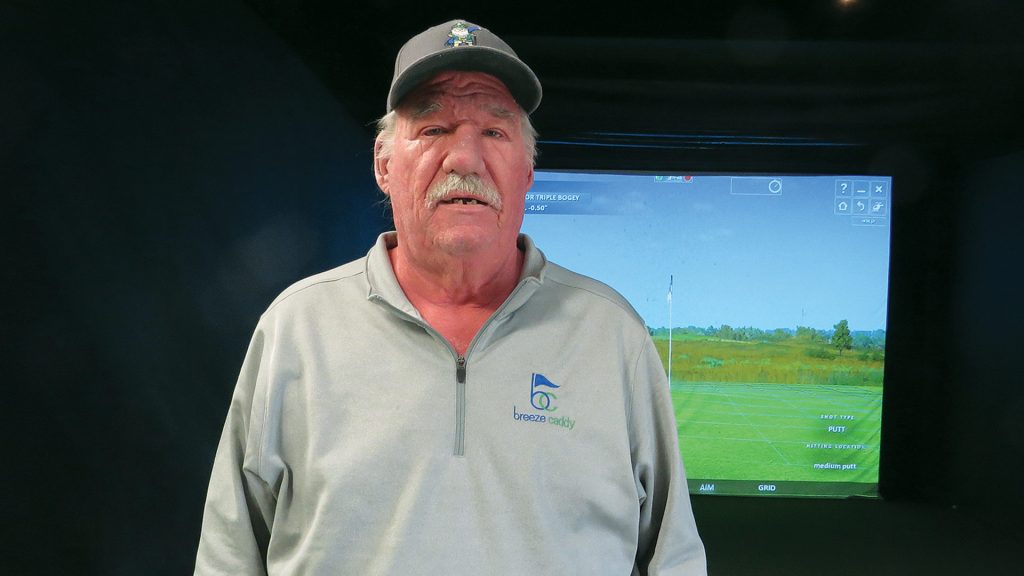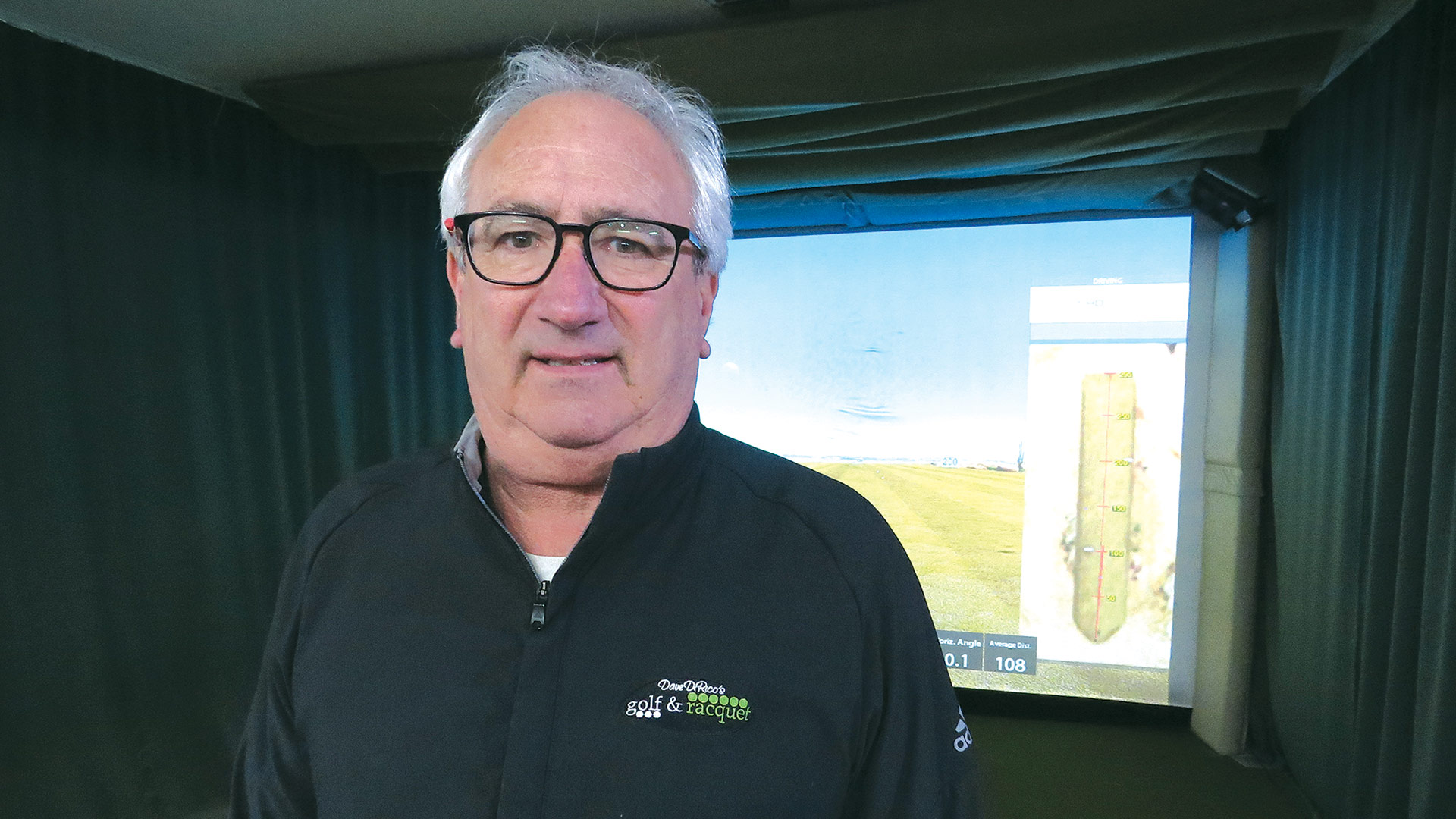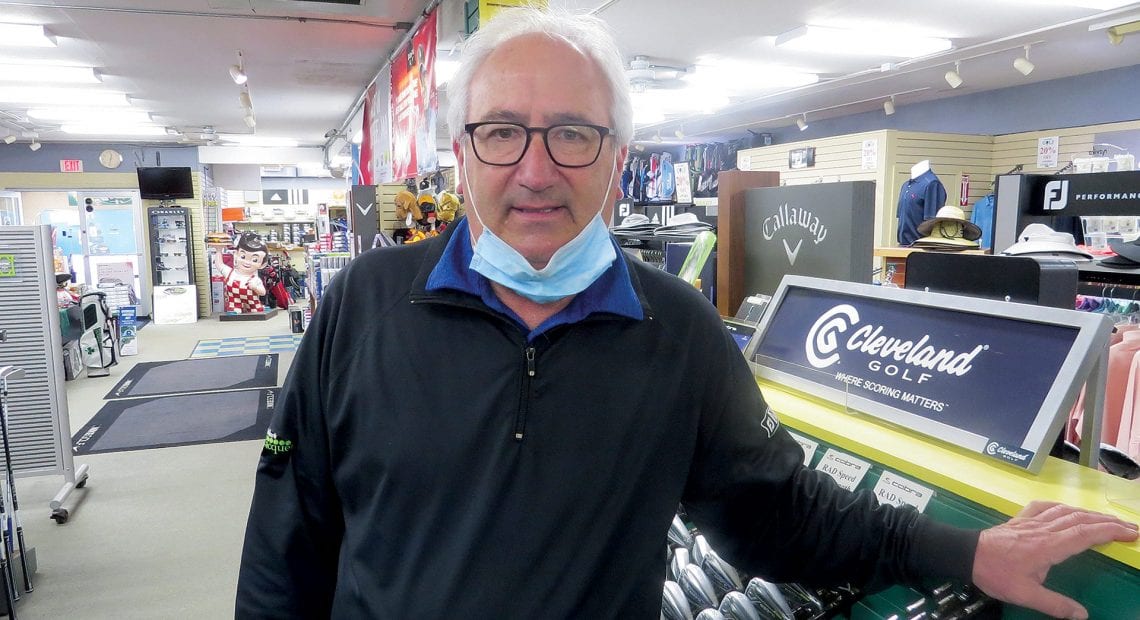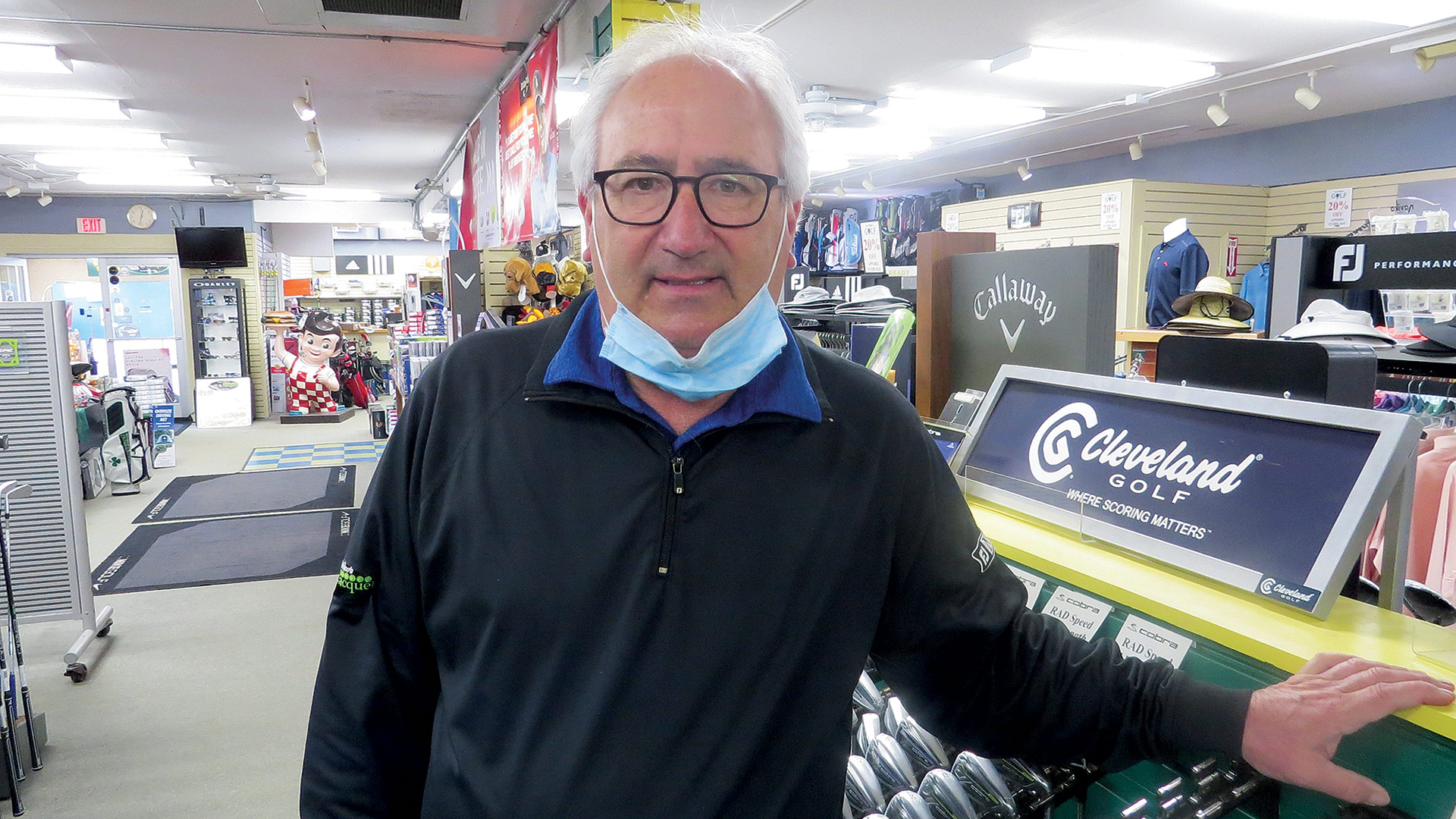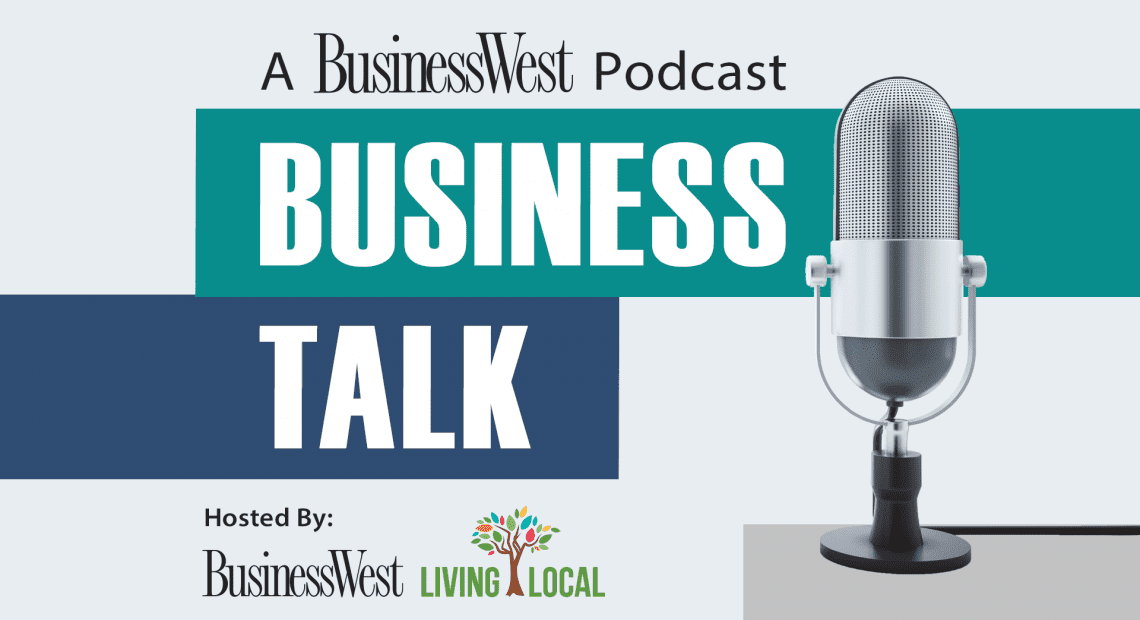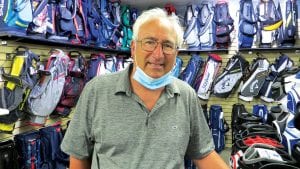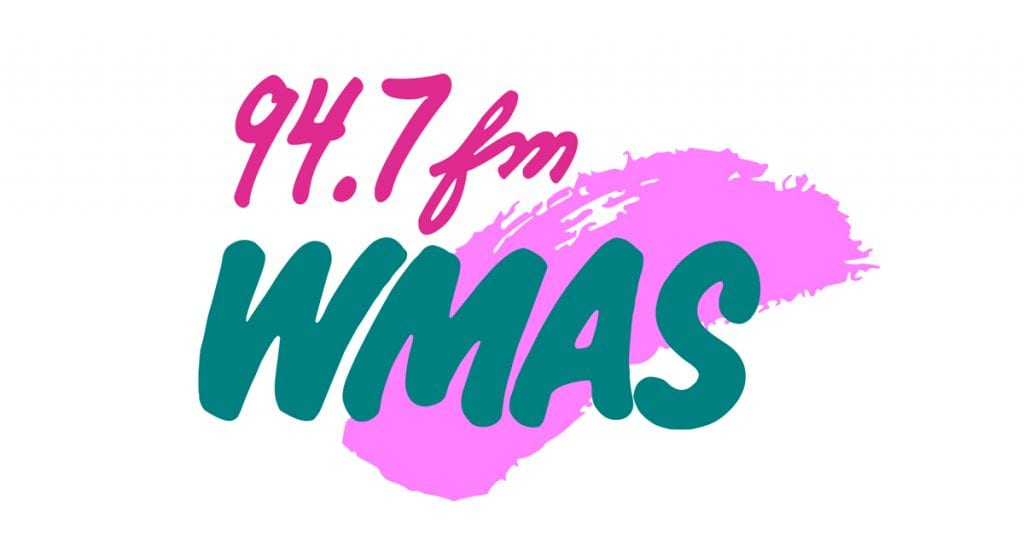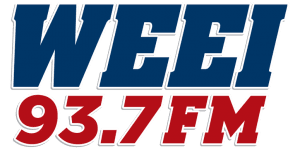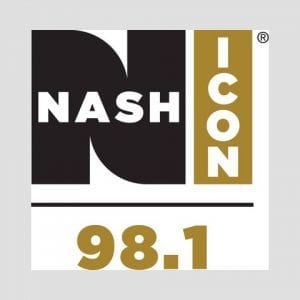Staying the Course
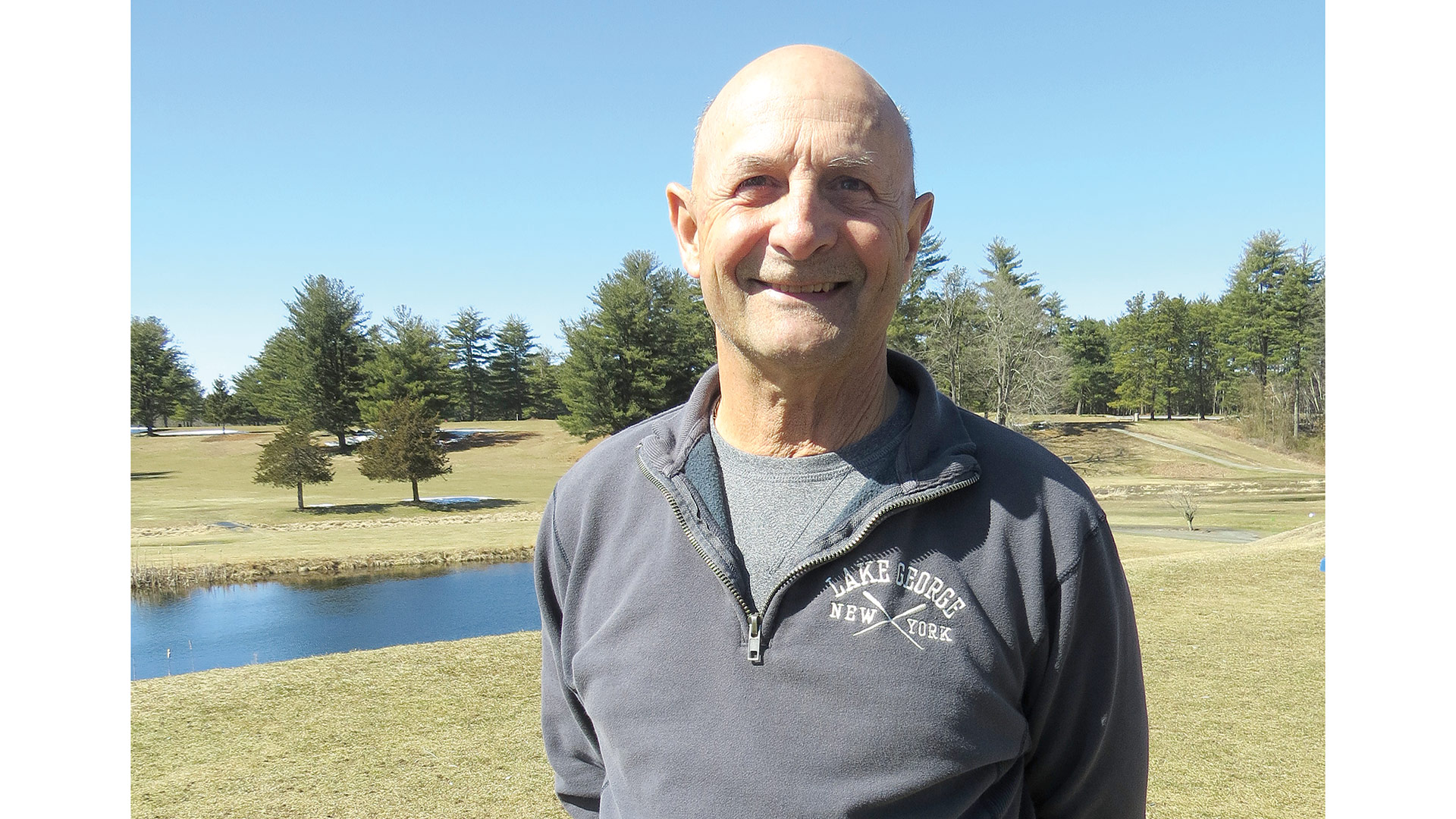
Ted Perez, long-time pro at East Mountain Country Club
When Ted Perez Jr. talks about the 2023 golf season, he uses the present tense — and even the past tense on occasion.
Indeed, Perez, the pro and co-owner of East Mountain Country Club in Westfield, said the season — for his course, anyway — began in January, as it sometimes does; this family-owned club is famous for being open whenever there is no snow on the ground.
But this January was different from just about any other that came before it, said Perez, who said the course was probably open for play all but a few days that month. And it was open most every day the first three weeks in February as well.
March wasn’t as kind, with the course closed several days by snow and play reduced to a trickle on many others, he said, but overall, it’s been a phenomenal start to 2023.
“I’ll call this a non-winter,” said Perez, whose father, Ted Perez Sr., built this course, located just a long par 5 from the runways at Barnes Municipal Airport, 60 years ago. “I wish every winter could have been like this one.”
Elaborating, he said winter golf of this kind is a real boon for the course because the revenue generated isn’t offset by the expenses encumbered most of the rest of the year, everything from cutting the grass to overseeding the fairways to paying the people to perform those tasks. “My father used to say, ‘it’s like finding money on the street.’”
As the 2023 season begins for most courses in the region — a few others were open for play through during stretches of the winter — they are hoping that their springs, summers, and falls are as good, relatively speaking, as Perez’s winter was.
“My father used to say, ‘it’s like finding money on the street.’”
Actually, they’ll settle, if that’s the right word, for what they’ve seen the past few years, a recognized surge in play that started during the summer of 2020, the height of the pandemic, when there was little else for people to do — they couldn’t even play tennis due to restrictions imposed by the state.
That surge continued into 2021 and then 2022, said Jesse Menachem, executive director and CEO of the Massachusetts Golf Assoc., noting that the numbers were down slightly in 2022 from 2021, but still better than the years leading up to the pandemic.
“We saw levels jump considerably in 2020 and into 2021,” he told BusinessWest. “In 2022, we were able to sustain levels and continue to grow. Overall, we’ve been able to retain the new golfers and the golfers who were brought back into the game by the pandemic. Our facilities, our operators, and our organizations are doing a great job of keeping the game sticky, keeping it relevant.”
The questions on everyone’s mind going into the new year are … will this surge continue?, and to what extent? As with the weather — always the biggest question mark heading into a new year — no one really knows the answers, but those we spoke with project another solid year for the local golf industry.
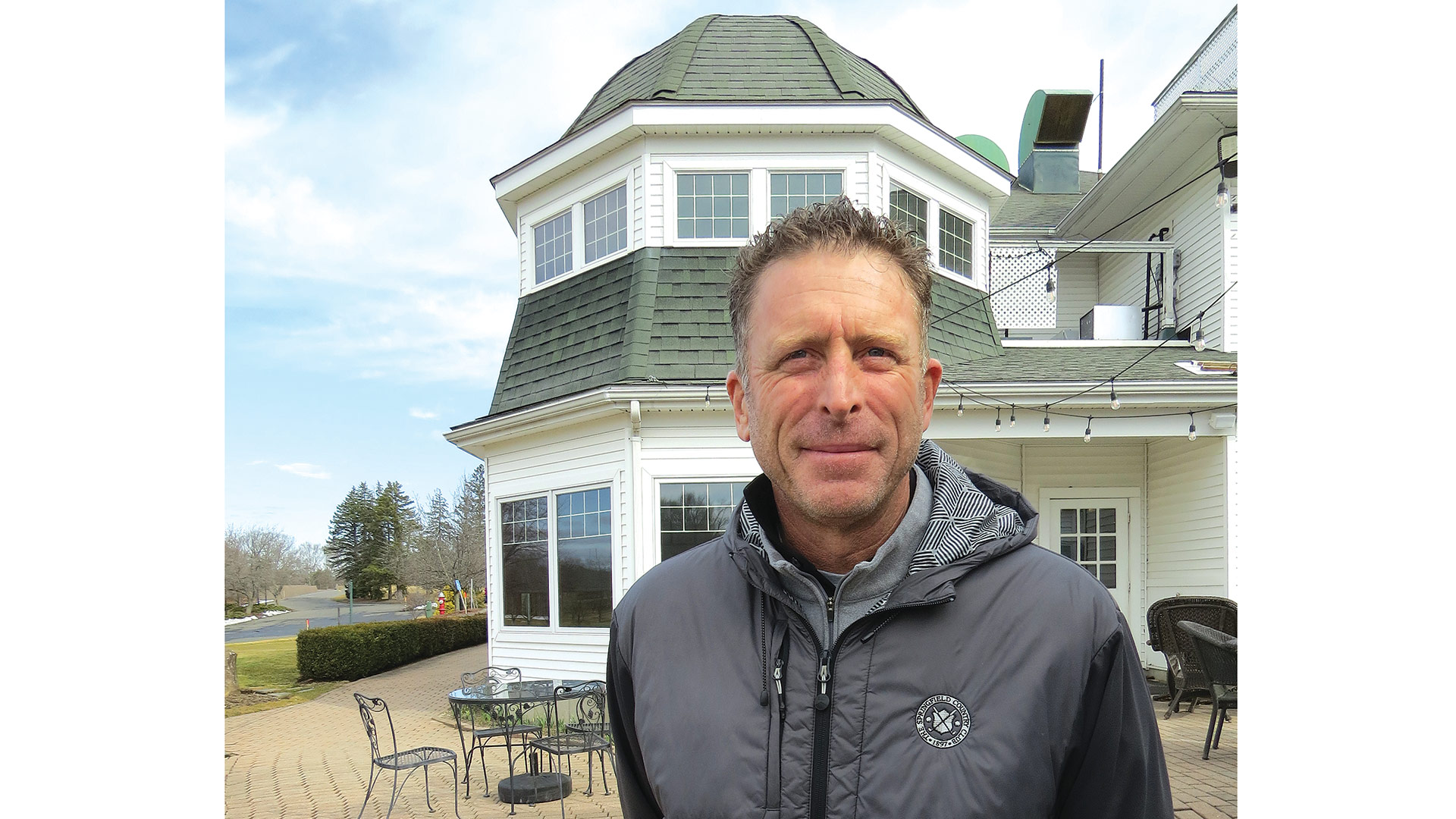
EJ Altobello, head pro at Springfield Country Club, is among those projecting the recent surge in the region’s golf industry will continue in 2023.
EJ Altobello, head pro at Springfield Country Club, a private club, said most all signs point to a continuation of current trends (his club now has a healthy waiting list for membership), and he points to Florida, where the first three months of the year have been on par (yes, that’s an industry term) with the past few seasons, as evidence.
“They’re off to a great start,” he noted. “Golf retail is off to a great start, golf rounds are off to a great start, and I think things will go the same way up here — there’s no reason to believe otherwise.”
Steve Elkins, chair of the board at Amherst Golf Club, a nine-hole track owned by Amherst College and managed by the board members, agreed. He said the past few years have been solid, and revenues have helped put the course on more solid ground than it has been in some time.
“We’re in good shape … we’re in as a good a shape as we’ve been in a very long time,” he said, adding quickly that courses have to be careful and smart with their spending to stay in solid shape financially.
On the downside, if it can be considered that, it is somewhat more difficult to get a tee time at some courses, said Menachem, and there are now waiting lists at many private clubs. So accessibility is certainly not what it was in the pre-pandemic years.
But for those in this unpredictable business, those are definitely good problems to have.
Green Lights
It’s called Good Friday, Bad Golf.
That’s the name of the first organized golf outing of the year at East Mountain Country Club, and, as that name suggests, it’s played every year on Good Friday, which means that some years, it isn’t played at all due to inclement weather, especially when Easter comes earlier rather than later.
This year, it’s set for April 7, and Perez is hoping his luck with the weather in 2023 holds, because there are 140 signed up for golf and the dinner to follow it. Meanwhile, April 7, or thereabouts, is when most courses in the area project to be open, if not a week or more earlier — a solid head start over most years.
“We saw levels jump considerably in 2020 and into 2021. In 2022, we were able to sustain levels and continue to grow. Overall, we’ve been able to retain the new golfers and the golfers who were brought back into the game by the pandemic.”
Jesse Menachem
And as they open, they’re expecting to see roughly what they’ve seen for nearly the past three seasons — more business than they were seeing in the years leading up to the pandemic. In most cases, much more.
Indeed, through the end of the 2010s, golf was in the doldrums, continuing a downward trajectory that started in the early 2000s. For many, and especially the younger generations, the game was too time-consuming and too expensive, and they were putting their time and money elsewhere.
Public courses struggled to get daily play, often despite attractive specials, and private clubs, many of which had been historically full and boasted waiting lists, had plenty of spots available and were marketing themselves far more aggressively than ever before to bring in new members — and much-needed revenue.
The downward spiral was punctuated by the closing of several courses in the area, including Hickory Ridge in Amherst, Pine Grove in Northampton, and Southwick Country Club. Despite this thinning of the herd, many area courses continued to struggle.
Then, the pandemic came.
Golf was still slow and still comparatively expensive, but suddenly, people didn’t seem to care, or care as much. People of all ages and other demographic categories were looking for things to do, ways to keep active as they were eating and drinking more, and opportunities to socialize — and golf could check all those boxes, to one extent or another.
Then-Gov. Charlie Baker lifted tight restrictions on golf in early May 2020, and for the rest of the year, clubs saw surges in play, memberships, and retail sales.
Elkins said Amherst Golf Club (AGC) received a huge boost from students, most of them from UMass, who were still living in the area but not attending classes in person. Looking for things to do with their time, maybe 30 bought attractively priced memberships at AGC, a semi-private course.

Amherst Golf Club, a 9-hole track with a long history, has seen an increase in memberships and overall play since the start of the pandemic.
“We got a huge COVID bounce from students who couldn’t attend classes in person,” he said. “It was a one- or two-year bump, and now it’s gone away.”
Still, membership remains solid — it’s currently at about 265, down from the peak but certainly up from the pre-COVID years — and daily play (there’s a $32, play-all-day rate) has been stable as well and certainly helped by the closing of Hickory Ridge (just a mile or so down the road) a few years ago.
Different Strokes
The surge in play — and spending at local clubs — continued, and even accelerated, in 2021, despite the loss of maybe two dozen days of play to seemingly non-stop rain.
The skies brightened in 2022 — when obsessive heat was the bigger problem — and those trends continued. Indeed, almost everyone we spoke with said 2022 was down slightly from the year before, but still quite solid and better than pre-pandemic.
“Last year wasn’t quite as good, but right in that same ballpark,” said Altobello, using total rounds and membership, which is at a 15-year high, and his main measuring sticks. He noted that the difference might have been as simple as more people returning the office last year, making it somewhat more difficult to “sneak out for an afternoon round,” as he put it.
Overall, though, the numbers were quite good, and they provided ample evidence that those who picked up the game during the pandemic, or picked it up again after putting it down, were, indeed, staying with it, said Altobello, adding that these increases were across the board, and especially encouraging when it comes to women and young people, two demographic groups that many feel hold the key to the long-term success of the industry.
“The indicators are that they are still here,” he said. “How long they stay … that’s to be determined. But as of right now, they’re still out there playing. We’re seeing more and more women in the game, more and more men in the game, and we’ve had a great increase in our youth programs as well.”
As play picked up over the past few years, there were some changes to the landscape, ones that reflect concerns about the cost of the game and the time it consumes, said those we spoke with. Indeed, the nine-hole outing, or ones that are even shorter, became far more common, and more accepted, than perhaps ever before.
“In many cases, people only have time for nine holes. That’s roughly two and a half hours on a full course, and that’s all the time many people have.”
“Ten or 15 years ago, that wasn’t even a thought,” Menachem said of a nine- or maybe six-hole round. “It was either 18 holes or nothing; now, nine holes is a far more realistic and accepted option for those with families, for those with shorter windows of time to play before work or after work. That is definitely a positive.”
Dave Twohig, the head pro at Amherst Golf Club for more than 40 years, agreed. “In many cases, people only have time for nine holes,” he said. “That’s roughly two and a half hours on a full course, and that’s all the time many people have.”
Amherst actually has two “loops,” as he called them, holes 1-5 and 6-9 — both wind up back at the clubhouse — that people can play if they have just an hour or so and want to get a little play in, and many do just that.
Round Numbers
Looking ahead, or at what’s right in front of them, in the case of East Mountain and other courses that have been open for play in Q1, those we spoke with said the outlook for 2023 is colored by optimism.
And the head start many courses were able to get will certainly help, said Menachem.
Indeed, he said that, for tracks like East Mountain and many others, especially in Eastern Mass. and on the Cape (maybe 20% of the state’s courses), the robust first quarter provides needed cash flow, as Perez noted, when there are few, if any, offsetting expenses.
“It’s like found money,” said Menachem. “You’re running on a thin operation, and you’re allowing access to the golf course in the condition that it’s in without much preparation on the maintenance front; it’s not too much of a heavy lift, and the revenue you’re able to derive should completely outweigh the expenses.”
Also, the early, solid start provides a buffer against possible headwinds, such as heavy rain and excessive heat, later in the year, he went on.
Meanwhile, almost all courses should be able to open earlier than what would be considered normal, said Menachem, who, as he spoke with BusinessWest a few weeks back, said 60 to 70 were already open.
Despite all the optimism that prevails within the industry, there are still challenges to be overcome.
Indeed, the ongoing workforce crisis is still making it more difficult to attract and retain help than it has been historically.
“Labor is still a huge issue, especially on the maintenance and operations side of the game,” Menachem said. “It’s not always been attractive to get up early and set up a golf course, and we want to make sure we can support the next generation of staff and make sure wages are competitive with other industries. Meanwhile, being a seasonal sport also has its challenges.”
Elkins agreed, noting that Amherst Golf Club has increased pay rates to remain competitive and hire and retain not only young people, but also some retirees looking to work and stay active.
Meanwhile, the higher cost of … well, just about everything poses stern challenges for clubs, most of which are operating on rather thin margins and without huge reserves to fall back on. In a word, clubs need to be careful, said Elkins, adding that this certainly the case at AGC.
“Making sure that we manage our cash is really important,” he noted. “Like a lot of courses, we’re in good shape, but we’re not going to spend a ton of money on something that’s not core to the course, because it’s risky. We want to make sure we have a good capital reserve and that we spend our money wisely.”
Perez agreed, noting that, despite his great start to 2023, he knows things can change quickly, and he’s learned to reserve judgment until he’s added up all the numbers in December.
“I don’t get too caught up in all the numbers until the end of the year,” he said. “I’ve been doing this a long time, and I know better than to get too excited in March. But it is good to have a non-winter like this one; it beats the alternative.”
Staying on a Roll
With the non-winter of 2023 now in the rear view, the region’s golf industry looks forward to the next three seasons.
They do with a spring in their step — figuratively but also quite literally, and optimism that the recent surge the game has enjoyed will continue.
Time will tell if they are right, but all signs indicate that area operators will be able to stay the course — in all kinds of ways.






